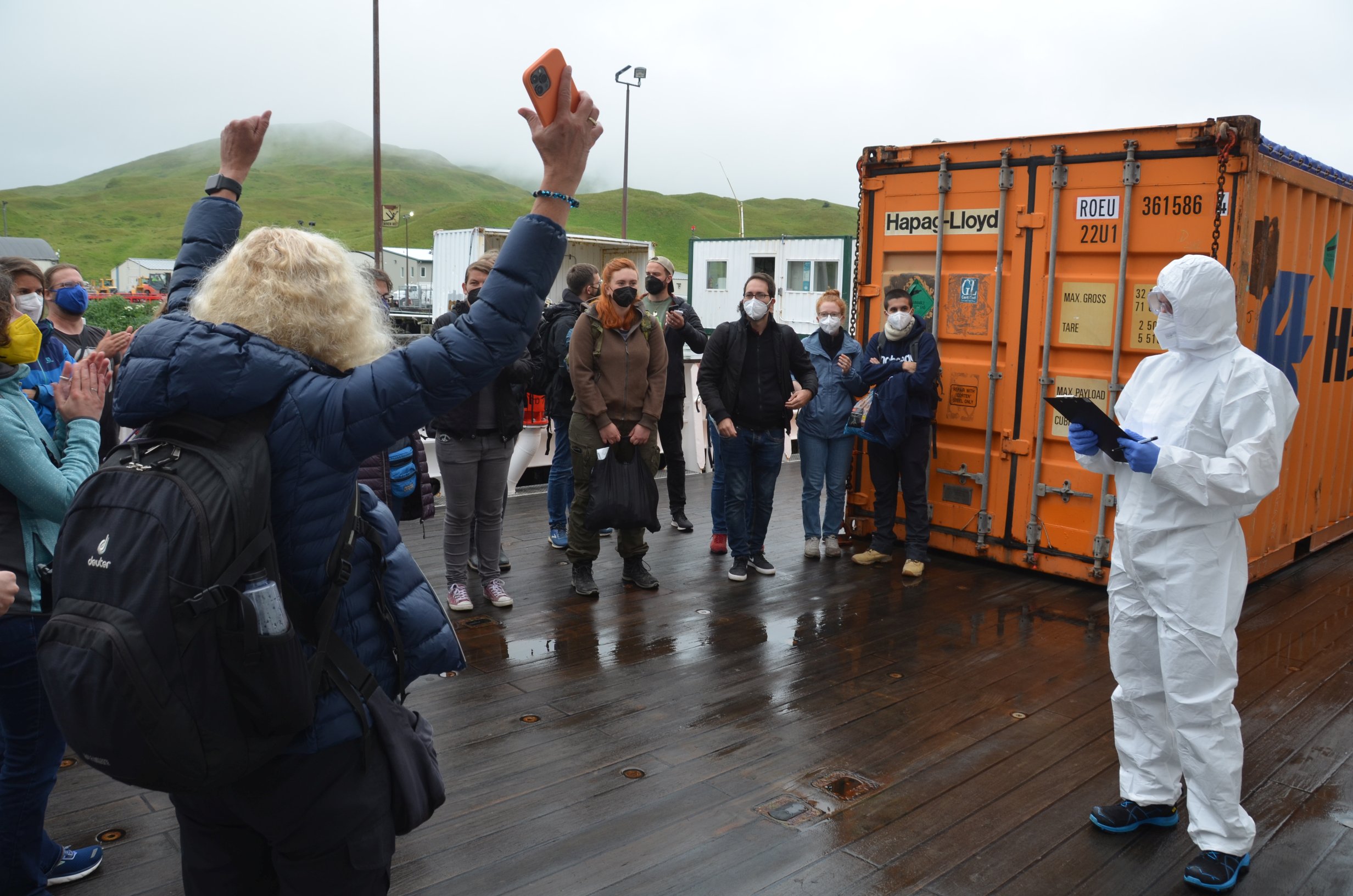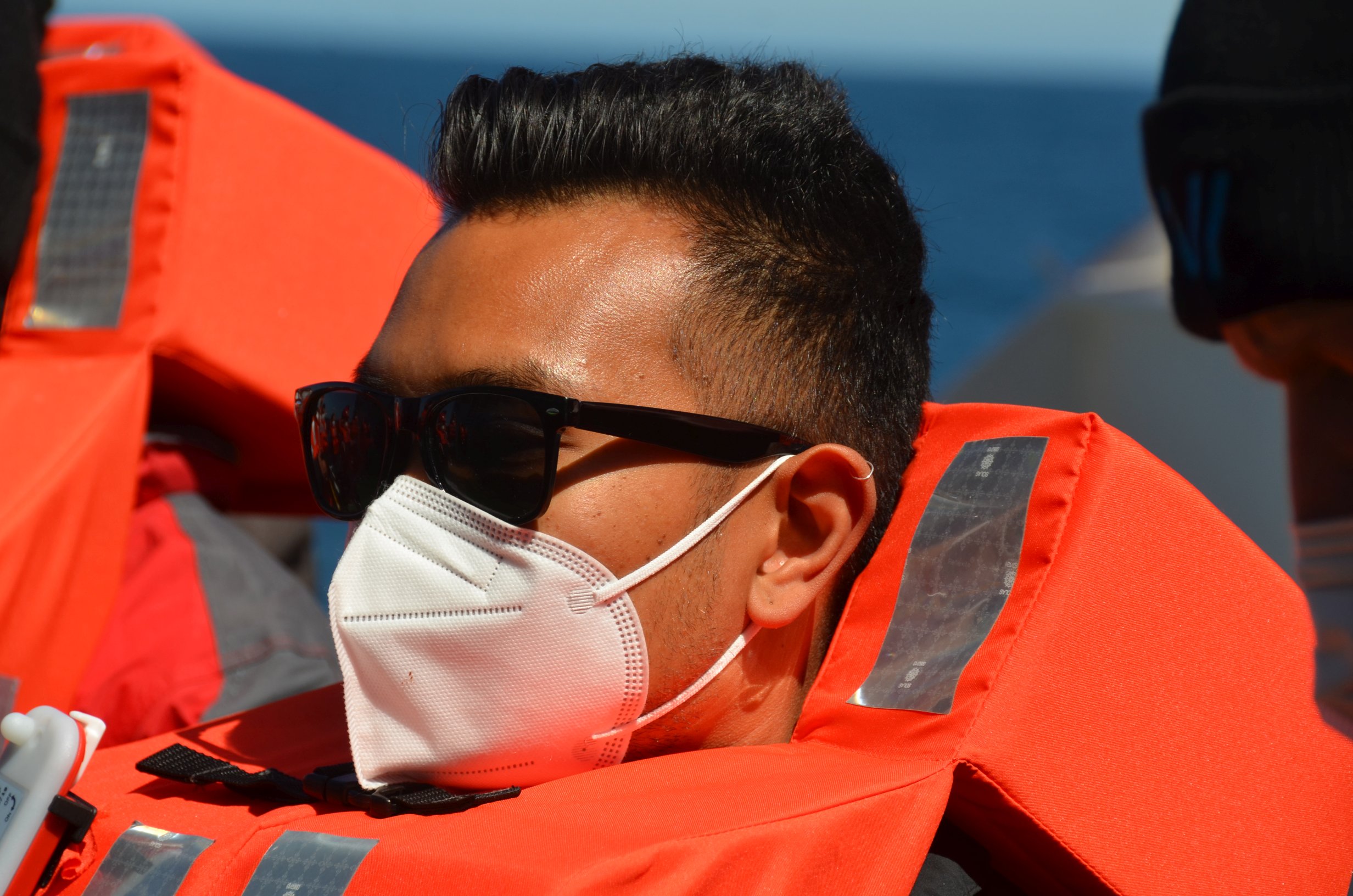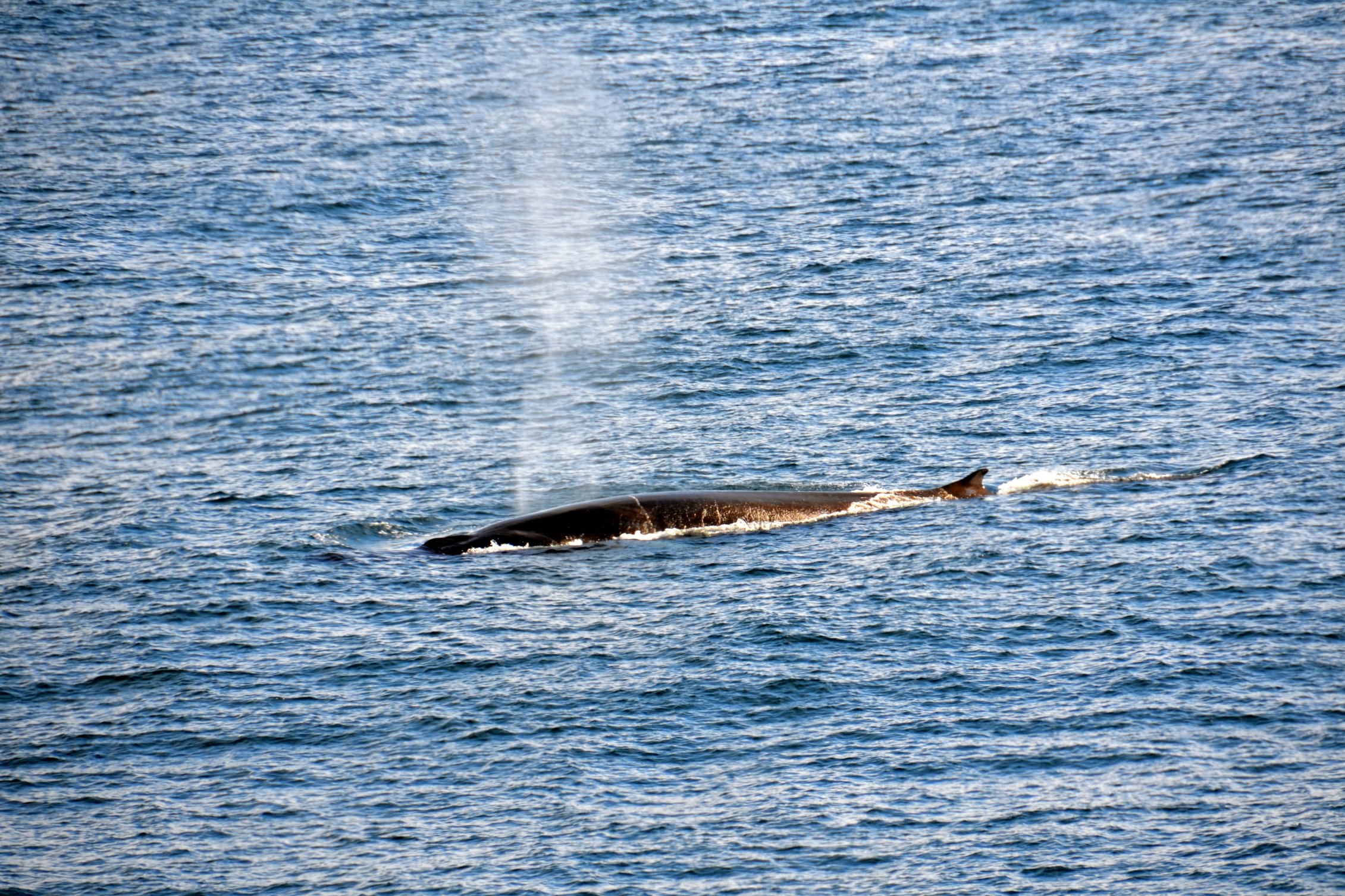Six years: of science, on RV Sonne, and at sea
At this very moment, I’m writing to you from the Bering Sea, at approximately 54 °N, 172 °W. It is 22:00, the sun is still shining, and we have just stopped to collect the very first water sample of this cruise. This feels like déjà vu, but pleasant.
Six years ago, I was first here, almost in this exact same spot: aboard the RV Sonne, in the Bering Sea, collecting water samples. My cabin from 2016 is right next to where I’m currently sitting; spätzle, which I tasted for the first time in 2016, was just served for dinner this evening; and several flavors of Ritter Sport that I came to love in 2016 are now in my possession, in preparation for the long working days in the cold (4°C) room—my favorite place on any ship.
But what a difference six year makes in all other aspects of life!
2016: I was a PhD student at UNC Chapel Hill
2022: I’m a postdoc at University of Southern Denmark
2016: I worked on microorganisms (mainly bacteria) in the water column.
2022: I’m working on microorganisms (mainly bacteria) in sediments.
2016: Air did not have to be filtered before entering my nose.
2022: I have to use an FFP2 mask in the presence of others, except during meals when we are physically distanced.
2016: No gray hair.
2022: …
The theme that continues in my life, however, is that I remain driven to understand how microorganisms – the tiniest life on Earth – make a living in the ocean. What do they eat? How do they eat? Why do they want to eat that?! But, this time, I focus my attention to the microorganisms in the deepest parts of the ocean: the ‘hadal’ sites, named after Hades, the Greek god of the underworld.
“Why?!” – you might ask. Why make a big deal of such tiny creatures? Why risk getting gray hair to find out the diet of bacteria? Why research this on a cruise with scientists working mostly on larger organisms? Why fly all the way to Alaska?
Most of the ocean is 4000 m deep, but south of the Alaskan Aleutian Islands exists a part of the Pacific Ocean that can reach almost 8000 m – a linear “hole” called the Aleutian Trench, about which we hardly know anything. I study this as part of the Danish Center for Hadal Research at the University of Southern Denmark; two other scientists on board, Ronnie Glud (Director; Principal Investigator) and Frank Wenzhöfer (co-Principal Investigator) belong to the center. Together, we are trying to understand how microbial life in the deepest parts of the Aleutian Trench can persist under conditions humans would not survive: lack of sunlight, scarce food sources, and pressures that can crush an aluminum can down to a tenth of its size! How, then, do microorganisms survive all of this pressure, in this deep part of the Pacific Ocean where relatively little food is available?
I do not know. We do not know. And that’s why we’re here.
All of life is somehow connected. Microbial activity changes the environment in which larger organisms live; microorganisms become food to larger organisms; waste from larger organisms is eventually recycled by microorganisms. This circle of life is well-known, but how it plays out in the Aleutian Trench is a mystery. And this interconnectedness tells us that in order to learn how deep-sea ecosystems thrive, we must understand the tiniest organisms. In the coming weeks, months, or even years, the scientists of AleutBio will have answers. Those of us in the HADAL Center will additionally have answers for other deep parts of the Pacific Ocean.
Six years have passed since I was last in the Bering Sea. The water beneath me is not the same; the RV Sonne has matured; the spätzle from dinner had slightly more red onions than I recall. The ‘firsts’ that I experienced back in 2016 now serve as my frame of reference. And the ‘firsts’ that we have yet to discover in the Aleutian Trench will be a baseline for the future – for organisms small and big, and for the scientists that seek to unravel their mysteries.
JP Balmonte
University of Southern Denmark



